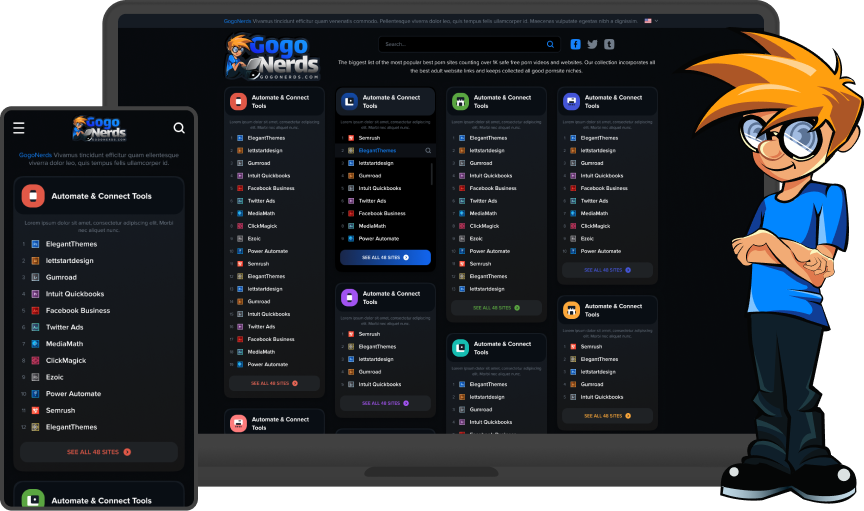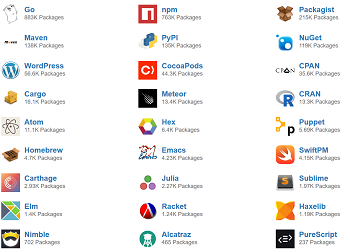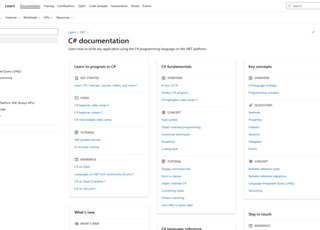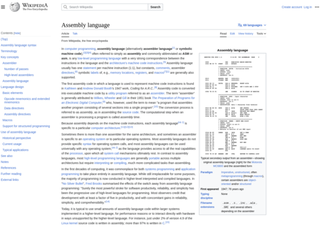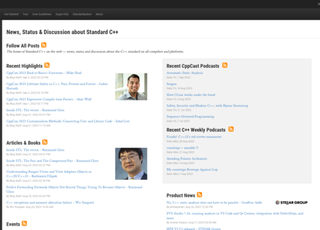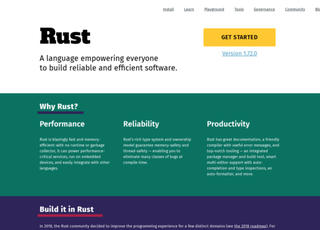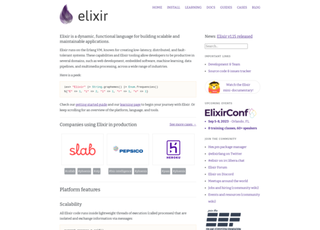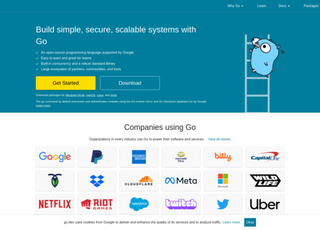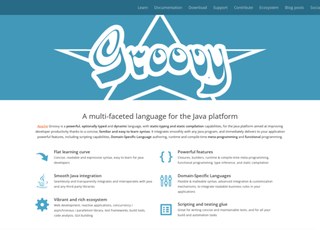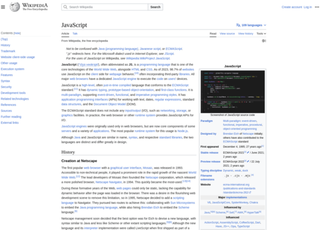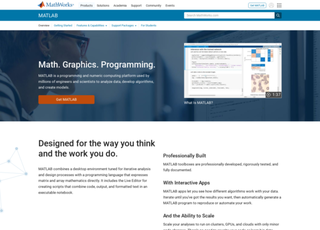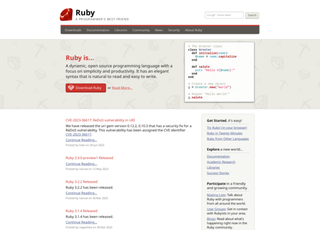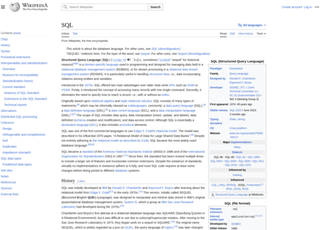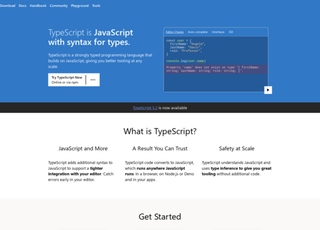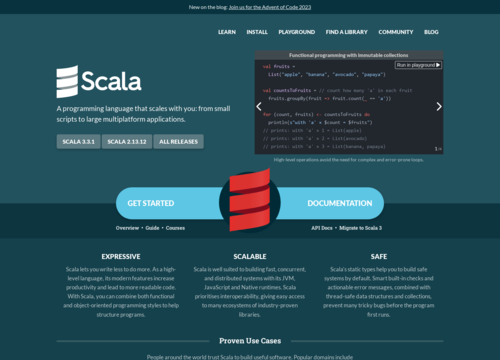Swift
Swift is a modern programming language developed by Apple for building apps on iOS, macOS, watchOS, and tvOS. Beyond Apple's platforms, Swift's reach has grown to include server-side development and even platforms like Linux. Here's a detailed overview of the Swift programming language:
Swift Programming Language: Detailed Overview
Key Features:
Modern Syntax:
Swift's syntax is clean, expressive, and easy to read, which improves code clarity and reduces error rates.
Performance:
Swift is designed for optimized performance, often outpacing Objective-C for many tasks.
Type Safety:
Strongly typed and ensures variables are explicit about their type, reducing runtime errors.
Memory Management:
Uses Automatic Reference Counting (ARC) for efficient memory management without a garbage collector, minimizing app overhead.
Error Handling:
Provides a robust system for catching and handling both compile-time and runtime errors.
Optionals:
A core feature that represents the absence of a value, leading to safer code by forcing the developer to handle the 'nil' or no-value scenario.
Interoperable:
Can work seamlessly alongside Objective-C code within the same project.
Playgrounds:
An interactive environment within Xcode that allows developers to write code and see results immediately, which is great for learning and testing code snippets.
Syntax Highlights:
Swift's syntax is designed to be clear and concise, with many modern features:
Variables and Constants:
Swift uses var for variables and let for constants.
Type Inference:
Swift can infer variable types, but you can also specify them explicitly.
Control Structures:
Supports standard control structures like if, switch, and loops like for-in.
Functions:
Clear function declaration and calling syntax.
Development Environment:
Xcode:
Apple’s integrated development environment (IDE) for macOS, which provides a suite of tools for developing in Swift.
Pros and Cons:
Pros:
Modern and Readable Syntax:
Offers a cleaner syntax compared to Objective-C.
Safety and Stability:
Features like optionals and type safety lead to fewer crashes and bugs.
Performance:
Swift often offers better performance compared to Objective-C.
Community and Open Source:
Swift has a growing community and is open source, leading to a wider range of applications beyond just Apple devices.
Cons:
Young Language:
While mature, it's younger than many other languages, and early versions saw significant changes.
Limited Legacy Support:
Older versions of iOS and hardware might not support Swift or might need additional runtime components.
Migration Issues:
Transitioning from older versions of Swift to newer ones can sometimes pose challenges due to changes in the language.
Applications:
iOS, macOS, watchOS, tvOS:
The primary purpose for Swift's development was for building applications in the Apple ecosystem.
Server-Side Development:
With frameworks like Vapor and Kitura, Swift is now also being used for server-side development.
Cross-Platform Tools:
Platforms like SwiftUI aim to simplify development across Apple devices using a single codebase.
Ecosystem and Libraries:
Swift Package Manager (SPM):
Introduced in Swift 3.0, SPM is a tool for managing the distribution of Swift code. It’s integrated with the Swift build system and automates the process of downloading, compiling, and linking dependencies.
Libraries and Frameworks:
Beyond Apple's proprietary frameworks, Swift has a growing collection of open-source libraries. Frameworks like Alamofire for HTTP networking and Realm for databases are commonly used in Swift projects.
SwiftUI:
An innovative UI toolkit that allows developers to design apps in a declarative manner, meaning developers describe the UI's state, and the framework figures out the transitions. It aims to unify the user interface design process across all Apple platforms.
Community and Learning Resources:
Swift.org:
The primary hub for the open-source Swift community. It provides resources, documentation, and hosts the evolution process of Swift.
Swift Playgrounds:
An iPad and Mac app aimed at teaching coding through a series of interactive lessons and challenges. It's an excellent resource for beginners to get introduced to Swift in an engaging manner.
Conferences and Meetups:
There are several Swift-focused conferences worldwide, such as Swift Summit and try! Swift. Many local meetups also cover Swift and Apple development topics.
Online Resources:
Numerous tutorials, blogs, and courses are available online for Swift, catering to all skill levels.
Challenges:
ABI Stability:
Before Swift 5, the Application Binary Interface (ABI) was not stable, causing issues with app binaries. However, Swift 5 addressed this, bringing ABI stability.
Language Changes:
The evolution of Swift, especially in its early years, caused migration challenges. While this has stabilized recently, developers have to stay updated with the latest changes.
Integration with Third-Party Libraries:
Especially in the early days of Swift, there were challenges in integrating with libraries that were primarily written for Objective-C.
Beyond Apple:
Swift on Linux:
Swift is available on Linux, widening its scope beyond Apple's ecosystem. It opens up avenues for server-side programming and scripting.
Open Source:
Swift's open-source nature, announced in December 2015, was a significant step forward, allowing a broader set of developers to contribute to and influence its direction.
Swift is Apple's forward-facing programming language, and it's clear that it's here to stay. Its efficiency, safety features, and clean syntax make it a top choice for new projects in the Apple ecosystem. With its expansion to other areas like server-side development, Swift's importance in the broader programming landscape continues to grow.
Swift has proven its merit not just as a successor to Objective-C but as a robust, versatile language in its own right. Its design encourages best practices, its performance metrics are commendable, and its ever-evolving nature (backed by a tech giant and a passionate community) indicates that Swift is positioned to be influential for many years to come.
For developers in the Apple ecosystem, Swift is almost a no-brainer. For those outside it, the language's growth in areas like server-side development and its open-source nature make it an intriguing option to explore. As with any technology decision, it's essential to consider the project's needs and the team's expertise, but Swift's offerings make it a compelling choice for a broad range of applications.

